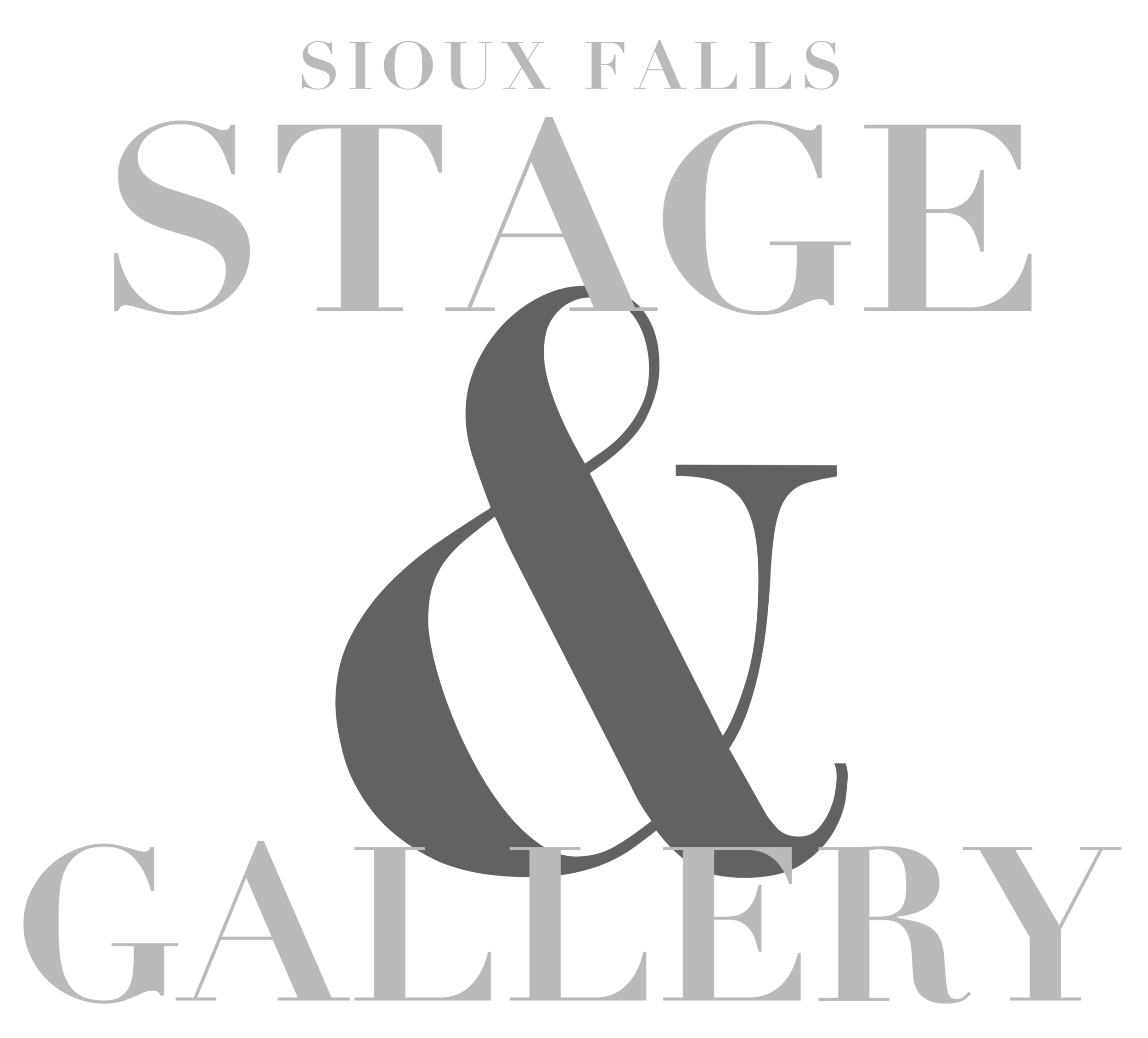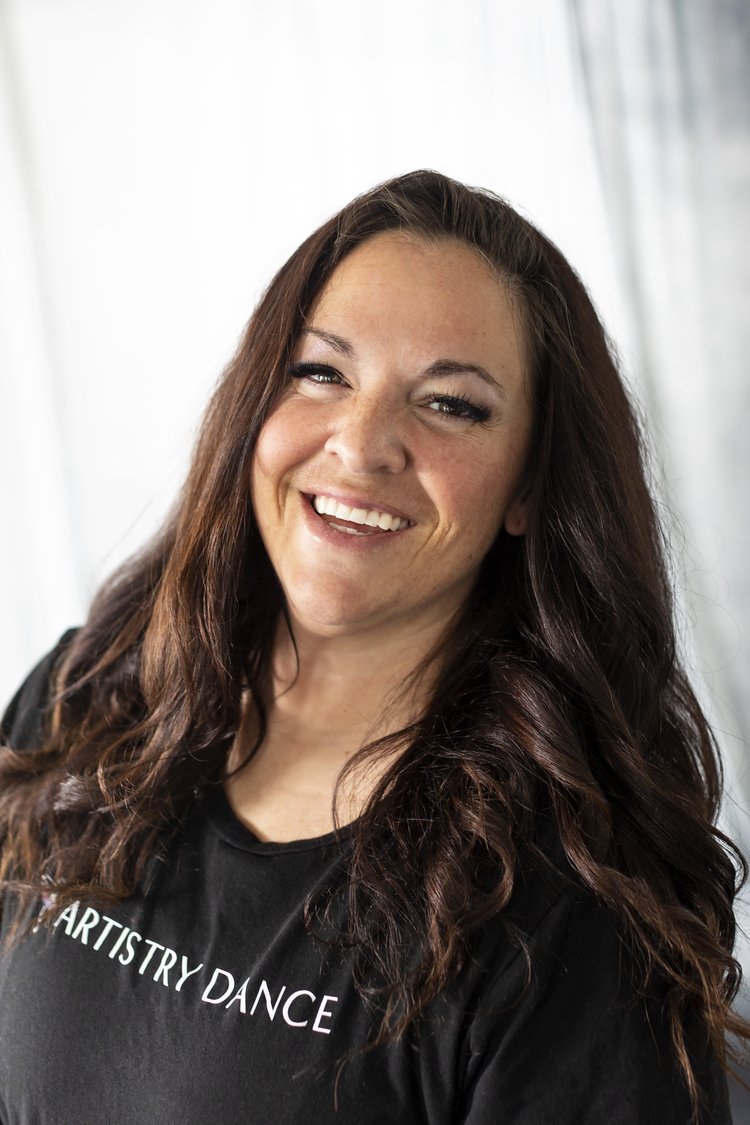The Magic of Unexpected
Creating something unexpected isn’t just a hallmark of local dance instructor and choreographer Jessica Rooney’s craft — it also happens to be indicative of her daily life. Home-schooling her four children, running four ice-cream stands during the summers and choreographing as many as 70 routines in a given year, the Artistry Dance artistic director and lead instructor is no stranger to a fast-and-furious schedule. But she wouldn’t have it any other way.
Jessica Rooney
“I don’t know a person who’s done dance for a long time who isn’t one of the most hard-working people I’ve ever met,” Rooney said. “I feel like we constantly push ourselves to be better, and that implements across all things. I feel like it creates such a strong work ethic. You build such an internal work ethic, and I’ve seen that across the board with dancers and dance students. It gives them a stronger sense of self.”
That identity-building through art and community is what drove the Artistry Dance mission when it opened here in Sioux Falls three years ago.
“We have a super welcoming environment,” Rooney said of the studio’s sensibilities. “I think that older kids build relationships with the younger kids. It has such a family environment. Yet we’re still training very advanced dancers — we’re just not taking the fun out of it while we’re doing it. They’re able to enjoy themselves and train, whatever their goal is. It’s the family-building that sets us apart. Once you’re in the studio, you’re part of our Artistry Dance community, whether you’re three or 18 or 22.
“You’re able to have that sense of happiness and joy and belonging, and still have that drive and that push, without the drill of it. We’ve found that sweet spot.”
Rooney herself valued her dance experience growing up in Oklahoma, where, despite performance not being a particularly common thread in her own family, she found her sense of self through movement.
“I have two computer science siblings. My mom is a schoolteacher. My other brothers are in the military and an accountant,” she said of her family’s interests and passions. “It was one of those things where, in Oklahoma, if you’re a little girl, you’re in dance. For the most part, if your parents can swing it, you’re in a dance class. It started with that, and then it creates this community — you start to build those relationships and that dance family and you just stick with it.
“Some of my closest friends to this day are people I danced with through junior high and high school. We still keep in contact more so than even my friends I went to college with.”
Originally intending to pursue veterinary medicine, Rooney’s own college experience at the University of Oklahoma is what eventually brought her to the conclusion that teaching and choreographing were her true passions.
“I really focused on my training, putting myself in all styles. I started training everything and focusing really hard. I spent two years getting a business degree, using my home studio and at 18, I started teaching,” she said. “University of Oklahoma only has a performance degree now, but at the time they had a pedagogy degree, which is what I wanted to do. The idea of performing — I did it a little bit and dabbled with some companies in Oklahoma — but I like teaching, I like choreographing.”
At the university, Rooney performed with the contemporary dance company on campus, all while additionally training for a ballet certification. “As a teacher, you have to do everything a student would do, but be able to describe how you would fix it, how you would correct it, how you would teach it.”
In addition to completing seven levels of this certification, Rooney also serves as a fellow member of the Cicchetti Council, an organization dedicated to maintaining the standards and method of ballet training.
“While I was in college, I was based mostly in modern and ballet, but I made sure to enroll in the jazz and tap classes, because I wanted to make sure I was well-rounded, and not a one-hit wonder with just one style I could do,” Rooney said. “I ended up in South Dakota to teach at a studio here, and from there I’ve moved on and have a studio with a friend of mine. We’ve been open for three years but have more than 300 students. It blew up really quickly.”
And with Artistry Dance thriving, Rooney and team have established the studio’s style as primarily one that’s welcoming to all artists at all levels of skill and commitment.
“One of our biggest things was making it a welcoming environment for everyone, whether it’s your first year of dance or your last year of dance,” she said. “Having a space where someone who is 13 or 12 doesn’t have to feel like it’s too late because they didn’t start when they were three or four. We really have tried to focus on finding space for those folks. And we have the teaching staff so that if you want to pursue a venue that is more serious at a company or college, we have that avenue at the studio.
“But we also want to make sure that student who’s only there for one class can be treated the same as the student who’s there for 20 classes. Just making it so that you can be recreational or you can be serious. I try to train every dance like they’re the serious dancer, because they could change their mind at some point! Just because they’re not serious about it doesn’t mean they shouldn’t excel just as much.”
Artistry’s work in the larger dance world has been a particular focus for Rooney, whose choreography has emphasized that unexpected layer of creativity.
“There was definitely a time in my journey as a choreographer that I suddenly grew up,” she said. “I do a lot of competitive choreography, and, for a long time, it was about the tricks and making it a big show. But it clicked a long time ago that it’s really about making it about the dancers, the story and what they’re putting on stage. To put something together that’s not just the typical ‘show me your tricks,’ but a storyline. We do weird, and we do it well. I can give you a beautiful ballet piece, a fun jazz piece — but for some reason we excel at doing stuff that is very different than anyone else.
“I like to avoid using the most obvious routes. I almost would call it satire, but without the silliness that’s often associated with the word. Recently we used ‘Wonderful World,’ but the whole dance was actually set up to be contraindicative of the song. It was very doom and gloom. I like to take something and see where I can go with it — what can I do to have someone see it differently. One of my favorite things to do is to twist and mold the music into something that was unexpected.”


